Years of service 1931–1945 Name Otto Skorzeny | Rank SS-Obersturmbannfuhrer Role Military Officer Service number SS #295,979 Children Waltraut Skorzeny | |
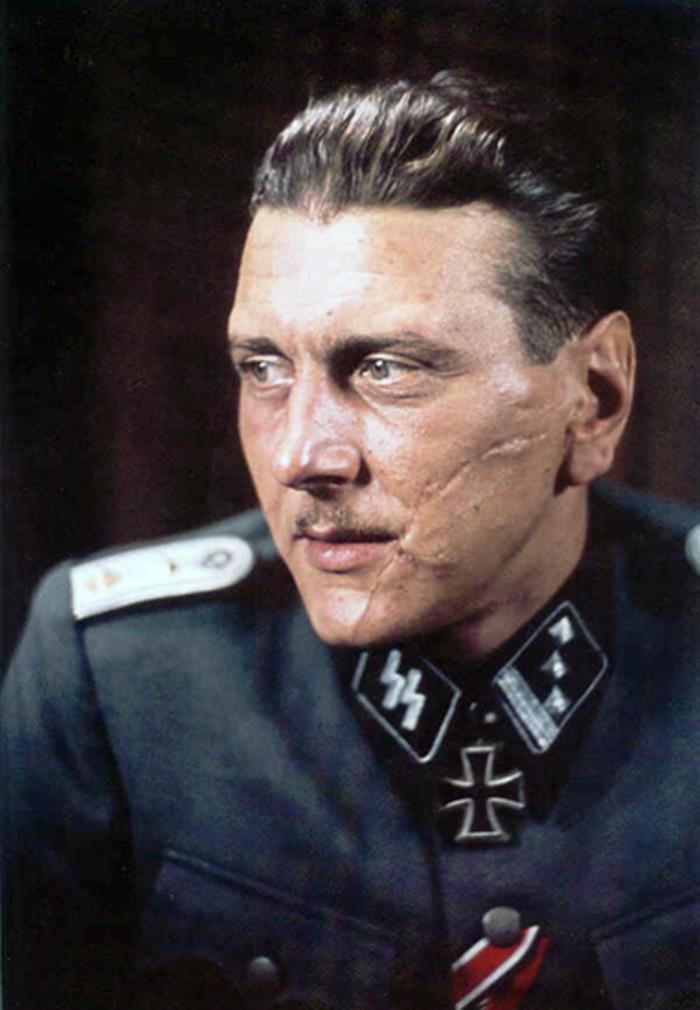 | ||
Nickname(s) "The Long Jumper" after rescuing Benito Mussolini in 1943"The Most Dangerous Man in Europe" after the Battle of the Bulge Parents Flora Sieber, Anton Skorzeny Books Skorzeny's Special Missions, My Commando Operation, For Germany: The Otto, Lebe gefahrlich, Wir kampften – wir verlor Similar People | ||
Commands held SS Panzer Brigade 150 Died 5 July 1975 (aged 67) Madrid, Spain Service/branch Schutzstaffel Commands held Sonder Lehrgang Oranienburg, SS Panzer Brigade 150 Battles/wars World War II Awards Knight's Cross of the Iron Cross with Oak Leaves Other work Civil engineer | ||
Hitler s super commando otto skorzeny
Otto Skorzeny (12 June 1908 – 5 July 1975) was an Austrian SS-Obersturmbannführer (lieutenant colonel) in the German Waffen-SS during World War II. During the war, he was involved in a string of operations, including the rescue mission that freed the deposed Italian dictator Benito Mussolini from captivity. Skorzeny led Operation Greif, in which German soldiers infiltrated enemy lines using their opponents' languages, uniforms, and customs. For this he was charged at the Dachau Military Tribunal with breaching the 1907 Hague Convention, but was acquitted. At the end of the war, Skorzeny was involved with the Werwolf guerrilla movement.
Contents
- Hitler s super commando otto skorzeny
- Otto skorzeny interviews
- Pre war years
- Eastern Front
- Operations by Skorzeny
- Liberation of Mussolini
- Operation Long Jump
- Raid on Drvar
- Hungary and Operation Panzerfaust
- Operation Greif and the German defeat
- Dachau Trials
- Escape from prison
- Military advisor
- Recruitment by the Mossad
- Neo Nazi activities
- Death
- Awards
- In fiction
- Articles
- References

Skorzeny escaped from an internment camp in 1948, hiding out on a Bavarian farm for 18 months, then spent time in Paris and Salzburg before eventually settling in Spain. In 1953 he became a military advisor to Egyptian President Mohammed Naguib and recruited a staff of former SS and Wehrmacht officers to train the Egyptian Army, staying on to advise President Gamal Abdel Nasser. In 1962, Skorzeny was recruited by the Mossad and conducted operations for the agency. He spent time in Argentina, where he acted as an advisor to President Juan Perón and as a bodyguard for Eva Perón. Skorzeny died of lung cancer on 5 July 1975 in Madrid. He was 67.
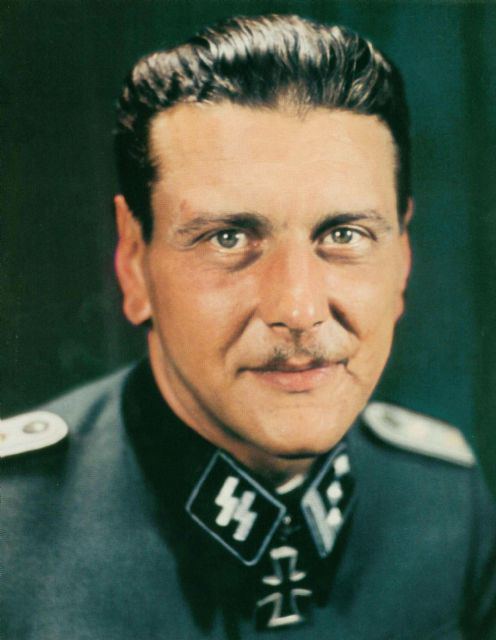
Otto skorzeny interviews
Pre-war years

Otto Skorzeny was born in Vienna into a middle class Austrian family which had a long history of military service. His surname is of Polish origin and Skorzeny's distant relatives came from a village called Skorzęcin in Greater Poland region.
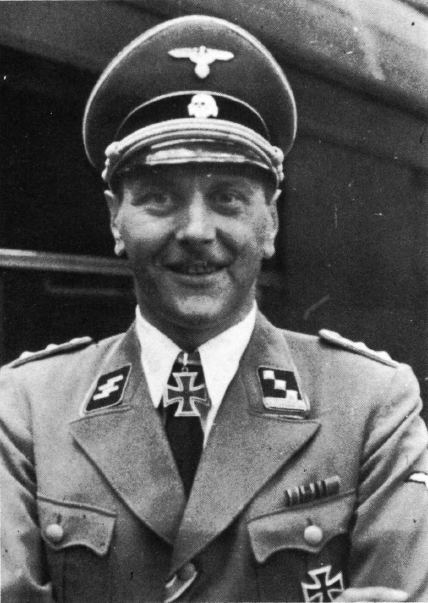
In addition to his native German, he spoke excellent French and was proficient in English. In his teens, Skorzeny once complained to his father about the austere lifestyle the family was enduring; his father replied, "There is no harm in doing without things. It might even be good for you not to get used to a soft life."
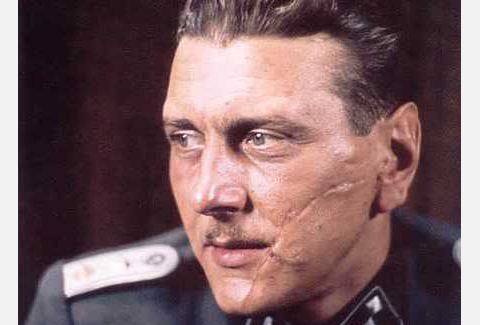
He was a noted fencer as member of a German-national Burschenschaft as a university student in Vienna. He engaged in fifteen personal combats. The tenth resulted in a wound that left a dramatic dueling scar—known in academic fencing as a Schmiss (German for "smite" or "hit")—on his cheek.
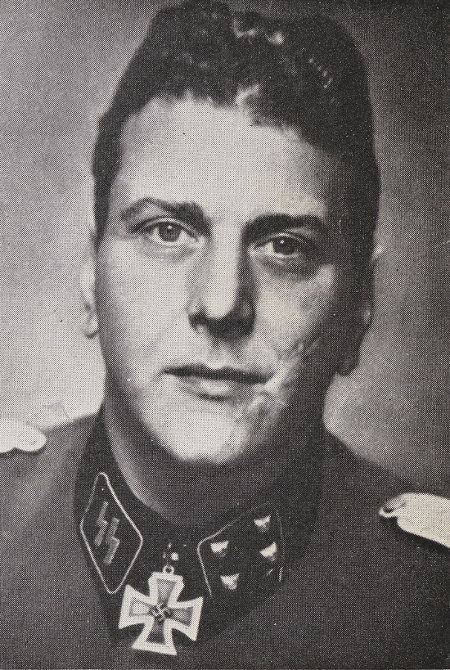
In 1931 Skorzeny joined the Austrian Nazi Party and soon became a member of the Nazi SA. A charismatic figure, Skorzeny played a minor role in the Anschluss on 12 March 1938, when he saved the Austrian President Wilhelm Miklas from being shot by Austrian Nazis.
Eastern Front
After the 1939 invasion of Poland, Skorzeny, then working as a civil engineer, volunteered for service in the German Air Force (the Luftwaffe), but was turned down because he was considered too tall at 1.92 metres (6 ft 4 in) and too old (31 years in 1939) for aircrew training. He then joined Hitler's bodyguard regiment, the Leibstandarte SS Adolf Hitler (LSSAH) as an officer-cadet.
Skorzeny took part in the invasion of the Soviet Union with the SS Division Das Reich and subsequently fought in several battles on the Eastern Front. In October 1941, he was in charge of a "technical section" of the German forces during the Battle of Moscow. His mission was to seize important buildings of the Communist Party, including the NKVD headquarters at Lubyanka, and the central telegraph office and other high priority facilities, before they could be destroyed. He was also ordered to capture the sluices of the Moscow-Volga Canal because Hitler wanted to turn Moscow into a huge artificial lake by opening them. The missions were canceled as the German forces failed to capture the Soviet capital.
In December 1942, Skorzeny was hit in the back of the head by shrapnel; he was evacuated to the rear for treatment. He was awarded the Iron Cross. While recuperating from his injuries he was given a staff role in Berlin, where he developed his ideas on unconventional commando warfare. Skorzeny's proposals were to develop units specialized in such warfare, including partisan-like fighting deep behind enemy lines, fighting in enemy uniform, sabotage attacks, etc. In April 1943 Skorzeny's name was put forward by Ernst Kaltenbrunner, the new head of the RSHA, and Skorzeny met with Walter Schellenberg, head of Amt VI, Ausland-SD, (the SS foreign intelligence service department of the RSHA). Schellenberg charged Skorzeny with command of the schools organized to train operatives in sabotage, espionage, and paramilitary techniques. Skorzeny was appointed commander of the recently created Waffen Sonderverband z.b.V. Friedenthal stationed near Berlin (the unit was later renamed SS Jagdverband 502, and in November 1944 again to SS Combat Unit "Center", expanding ultimately to five battalions).
The unit's first mission was in mid-1943, Operation François. Skorzeny sent a group by parachute into Iran to make contact with the dissident mountain tribes to encourage them to sabotage Allied supplies of material being sent to the Soviet Union via the Trans-Iranian Railway. However, commitment among the rebel tribes was suspect, and Operation François was deemed a failure.
Operations by Skorzeny
Liberation of Mussolini
In July 1943, he was personally selected by Hitler from among six German Air Force (Luftwaffe) and German Army (Heer) special agents to lead the operation to rescue Italian dictator Benito Mussolini, who had been overthrown and imprisoned by the Italian government.
Almost two months of cat-and-mouse followed as the Italians moved Mussolini from place to place to frustrate any rescuers. There was a failed attempt to rescue Mussolini on 27 July 1943. The Ju 52 that the crew was aboard was shot down in the area of Pratica di Mare. Otto Skorzeny and all but one of his crew bailed out safely. Mussolini was first held in a villa on La Maddalena, near Sardinia. Skorzeny was able to smuggle an Italian-speaking commando onto the island, and a few days later he confirmed Mussolini was in the villa. Skorzeny then flew over in a Heinkel He 111 to take aerial photos of the location. The bomber was shot down by Allied fighters and crash-landed at sea, but Skorzeny and the crew were rescued by an Italian destroyer.
Mussolini was moved soon after. Information on Mussolini's new location and its topographical features were finally secured by Herbert Kappler. Kappler reported Mussolini was held in the Campo Imperatore Hotel at the top of the Gran Sasso mountain, and only accessible by cable car from the valley below. Skorzeny flew again over Gran Sasso and took pictures of the location with a handheld camera. An attack plan was formulated by General Kurt Student, Harald Mors (a paratrooper battalion commander), and Skorzeny.
On 12 September, Gran Sasso raid (a.k.a. Operation Oak and Unternehmen Eiche), was carried out perfectly according to plan. Mussolini was rescued without firing a single shot. Flying out in a Storch airplane, Skorzeny escorted Mussolini to Rome and later to Berlin. The exploit earned Skorzeny fame, promotion to Sturmbannführer and the Knight's Cross of the Iron Cross. Mussolini created a new Fascist regime in northern Italy, the Italian Social Republic (Repubblica Sociale Italiana). Books and papers written about him prior to the 2013 release of records pursuant to the Nazi War Crimes Declassification Act incorrectly refer to him as "Field Commander" of the operation.
Operation Long Jump
"Operation Long Jump" was the alleged codename given to a plot to assassinate the "Big Three" (Joseph Stalin, Winston Churchill, and Franklin Roosevelt) at the 1943 Tehran Conference. Hitler supposedly gave the command of the operation to Ernst Kaltenbrunner, chief of the RSHA, who, in turn, ceded the mission to Skorzeny. Knowledge of the whole scheme was presented to the Western Allies by Stalin's NKVD at the Tehran conference. The Soviets said they had learned about its existence from counter espionage activities against German intelligence. Their agents had found out the Nazis knew the time and place of this meeting because they had cracked a US naval code. According to the NKVD the assassination plot was foiled after they identified the German spies in Iran forcing Skorzeny to call off the mission due to inadequate intelligence.
Following Tehran, the story was treated with incredulity by the British and Americans who dismissed it as Soviet propaganda. Skorzeny supported this view by stating in his post-war memoirs that no such operation ever existed. He said the story about the plans being leaked to Soviet spy Nikolai Kuznetsov by an SS Sturmbannführer named Hans Ulrich von Ortel was a complete Soviet invention; Hans Ulrich von Ortel never existed. Skorzeny claimed his name was used only to add credibility to the story because the NKVD knew his renowned record as an SS commando would make the existence of such an operation more plausible.
Raid on Drvar
In early 1944, Sonderverband z.b.V. Friedenthal was re-designated SS-Jäger-Bataillon 502 with Skorzeny staying on as commander. They were assigned to Operation Rösselsprung, known subsequently as the Raid on Drvar. Rösselsprung was a commando operation meant to capture the Yugoslav commander-in-chief, Marshal Josip Broz Tito, who was also recently recognized by the Allies as the Yugoslav prime minister. Marshal Tito led the Yugoslav Partisans resistance army from his headquarters near the Bosnian town of Drvar, in the center of a large area held by the Partisans.
Hitler knew Tito was receiving Allied support and was aware that either British or American troops might land in Dalmatia along the Adriatic coastline with support from the Partisans. Killing or capturing Tito would not only hinder this, it would give a badly needed boost to the morale of Axis forces engaged in occupied Yugoslavia. Skorzeny was involved in planning Rösselsprung and was intended to command it. However, he argued against implementation after he visited Zagreb and discovered that the operation had been compromised through the carelessness of German agents in the Nazi-affiliated Independent State of Croatia in occupied Yugoslav territory.
Rösselsprung was put into action nonetheless, but it was a complete disaster. The first wave of paratroopers, following heavy bombardment by the Luftwaffe, jumped between Tito's hideout in a cave and the town of Drvar; they landed on open ground and many were promptly shot by members of the Tito Escort Battalion, a unit numbering fewer than a hundred soldiers. The second wave of paratroopers missed their target and landed several miles out of town. Tito was gone long before paratroopers reached the cave; a trail at the back of the cave led to the railway tracks where Tito boarded a train that took him safely to Jajce. In the meantime, the Partisan 1st Brigade, from the 6th Lika Partisan Division, arrived after a twelve-mile (nineteen-kilometer) forced march and attacked the Waffen-SS paratroopers, inflicting heavy casualties.
Hungary and Operation Panzerfaust
In October 1944, Hitler sent Skorzeny to Hungary after receiving word that Hungary's Regent, Admiral Miklós Horthy, was secretly negotiating with the Red Army. The surrender of Hungary would have cut off the million German troops still fighting in the Balkan peninsula.
Skorzeny, in a daring "snatch" codenamed Operation Panzerfaust (known as Operation Eisenfaust in Germany), kidnapped Horthy's son Miklós Horthy Jr. and forced his father to resign as head of state. A pro-Nazi government under dictator Ferenc Szálasi was then installed in Hungary. In April 1945, after German and Hungarian forces had already been driven out of Hungary, Szálasi and his Arrow Cross Party-based forces continued the fight in Austria and Slovakia. The success of the operation earned Skorzeny promotion to Obersturmbannführer.
Operation Greif and the German defeat
As part of the German Ardennes offensive in late 1944 (Battle of the Bulge), Skorzeny's English-speaking troops were charged with infiltrating American lines disguised in American uniforms in order to produce confusion to support the German attack. For the campaign, Skorzeny was the commander of a composite unit, the 150th SS Panzer Brigade. As planned by Skorzeny, Operation Greif involved about two dozen German soldiers, most of them in captured American Jeeps and disguised in American uniforms, who would penetrate American lines in the early hours of the Battle of the Bulge to cause disorder and confusion. Skorzeny was well aware that under the Hague Convention of 1907, any of his men captured while wearing U.S. uniforms would be executed as spies and this possibility caused much discussion with Generaloberst Jodl and Field Marshal von Rundstedt.
A handful of his men were captured and spread a rumour that Skorzeny personally was leading a raid on Paris to kill or capture General Eisenhower, who was not amused by having to spend Christmas 1944 isolated for security reasons. Eisenhower retaliated by ordering an all-out manhunt for Skorzeny, with "Wanted" posters distributed throughout Allied-controlled territories featuring a detailed description and a photograph. In all, twenty-three of Skorzeny's men were captured behind American lines and eighteen were executed as spies for contravening the rules of war by wearing enemy uniforms.
Skorzeny spent January and February 1945 commanding regular troops as an acting major general, taking part in the defence of the German provinces of East Prussia and Pomerania, and at the Defence of Schwedt Bridgehead. On 17 March, he received orders to sabotage the last remaining intact bridge across the Rhine at Remagen following its capture by the Allies, but the bridge collapsed that same day, and the naval demolitions squad prepared instead unsuccessfully attacked a nearby Allied pontoon bridge between Kripp and Linz. Hitler awarded him one of Germany's highest military honours, the Oak Leaves to the Knight's Cross.
Dachau Trials
Skorzeny was interned for two years before being tried as a war criminal at the Dachau Trials in 1947 for allegedly violating the laws of war during the Battle of the Bulge. He and nine officers of the Panzerbrigade 150 were tried before a U.S. Military Tribunal in Dachau on 18 August 1947. They faced charges of improper use of U.S. military insignia, theft of U.S. uniforms, and theft of Red Cross parcels from U.S. POWs. The trial lasted over three weeks. The charge of stealing Red Cross parcels was dropped for lack of evidence. Skorzeny admitted to ordering his men to wear U.S. uniforms; but his defence argued that, as long as enemy uniforms were discarded before combat started, such a tactic was a legitimate ruse de guerre.
On the final day of the trial, 9 September, F. F. E. Yeo-Thomas, a former British SOE agent, testified that he and his operatives wore German uniforms behind enemy lines; the Tribunal acquitted the ten defendants. The Tribunal drew a distinction between using enemy uniforms during combat and for other purposes including deception and were unable to prove that Skorzeny had given any orders to actually fight in U.S. uniforms.
Escape from prison
Skorzeny was detained in an internment camp at Darmstadt awaiting the decision of a denazification court. On 27 July 1948 he escaped from the camp with the help of three former SS officers dressed in US Military Police uniforms who entered the camp and claimed that they had been ordered to take Skorzeny to Nuremberg for a legal hearing. Skorzeny afterwards maintained that the US authorities had aided his escape, and had supplied the uniforms.
Skorzeny hid out at a farm in Bavaria which had been rented by Countess Ilse Lüthje, the niece of Hjalmar Schacht (Hitler's former finance minister), for around 18 months, during which time he was in contact with Reinhard Gehlen, and together with Hartmann Lauterbacher (former deputy head of the Hitler Youth) recruited for the Gehlen Organization. Skorzeny was photographed at a café on the Champs Elysées in Paris on 13 February 1950. The photo appeared in the French press the next day, causing him to move to Salzburg, where he met up with German veterans and also filed for divorce so that he could marry Ilse Lüthje.
Shortly afterwards, with the help of a Nansen passport issued by the Spanish government, he moved to Madrid, where he set up a small engineering business. On April 1950 the publication of Skorzeny's memoirs by the French newspaper Le Figaro caused 1500 communists to riot outside the journal's headquarters.
Military advisor
In 1952 Egypt was taken over by General Mohammed Naguib. Skorzeny was sent to Egypt the following year by former General Reinhard Gehlen (who was now working for the CIA) to act as Naguib's military advisor. Skorzeny recruited a staff made up of former SS and Wehrmacht officers to train the Egyptian army. Among these officers were former Wehrmacht generals Wilhelm Fahrmbacher and Oskar Munzel; the head of the Gestapo Department for Jewish Affairs in Poland Leopold Gleim; and Joachim Daemling, former chief of the Gestapo in Düsseldorf. In addition to training the army, Skorzeny also trained Arab volunteers in commando tactics for possible use against British troops stationed in the Suez Canal zone. Several Palestinian refugees also received commando training, and Skorzeny planned their raids into Israel via the Gaza Strip in 1953-1954. One of these Palestinians was Yasser Arafat.
He stayed on to serve as an adviser to Egyptian President Gamal Abdel Nasser. After, he traveled between Spain and Argentina, where he acted as an advisor to President Juan Perón and as a bodyguard for Eva Perón, while fostering an ambition for the "Fourth Reich" to be centered in Latin America.
Recruitment by the Mossad
The Israeli security and intelligence magazine Matara published an article in 1989 claiming that Skorzeny had been recruited by Mossad in 1963, to obtain information on German scientists who were working on an Egyptian project to develop rockets to be used against Israel. Reporting on the Matara story, the major Israeli daily Yedioth Ahronot said that they had confirmed the story from their own senior Mossad source. Former Mossad head Isser Harel confirmed that former Nazis were recruited to provide intelligence on Arab countries.
Ian Black and Benny Morris wrote in 1991 that Skorzeny may not have known who he was working for, but in 2010 Tom Segev published in his biography of Simon Wiesenthal that Skorzeny had offered to help only if Wiesenthal removed him from his list of wanted war criminals. Wiesenthal refused, but Skorzeny finally agreed to help anyway. Segev gave as his main source the senior Mossad agent Rafi Meidan, to whom Segev attributes the primary role in the recruitment of Skorzeny.
Further details of the story were published by Yossi Melman and Dan Raviv in 2016. According to their information, a Mossad team had started to develop a plan to kill Skorzeny, but chief Isser Harel decided to attempt to recruit him instead, as a man on the inside would greatly enhance their ability to target Nazis who were providing military assistance to Egypt. He was successfully recruited and conducted operations for Mossad from 1962, where he worked with Avraham Ahituv and Rafi Eitan. Melman and Raviv noted that Eitan had confirmed Skorzeny's recruitment without commenting further, but other unnamed sources provided the details. Skorzeny was recruited after Mossad visited his home in Spain, where he expected he would be assassinated. After undergoing instruction and training in the Mossad's facilities in Israel, his work for the Mossad included assassinating German rocket scientist Heinz Krug who was working with Egypt, and mailing a letter bomb which killed five Egyptians at the Egyptian military rocket site Factory 333. He also supplied the names and addresses of German scientists working for Egypt and the names of European front companies supplying military hardware to Egypt.
Skorzeny never explained his precise reasons for helping Israel. It is speculated that Skorzeny's motives for working for the Mossad may have been a desire for adventure and intrigue, as well as to ensure he would not face assassination attempts from Mossad.
Neo-Nazi activities
It is believed by some that by using the cover names Robert Steinbacher and Otto Steinbauer, and supported by either Nazi funds or (according to some sources) by Austrian intelligence, Skorzeny set up a secret organization named Die Spinne (English: "The Spider") which helped as many as 600 former SS men escape from Germany to Spain, Argentina, Paraguay, Chile, Bolivia, and other countries. As the years went by, Skorzeny, Gehlen, and their network of collaborators gained enormous influence in Europe and Latin America. Skorzeny was a founder and an advisor to the leadership of the Spanish neo-Nazi group CEDADE, which had been established in 1966.
Like thousands of other former Nazis, Skorzeny was declared entnazifiziert (denazified) in absentia in 1952 by a West German government arbitration board, which now meant he could travel from Spain into other Western countries, on a special Nansen passport for stateless persons with which he visited Ireland in 1957 and 1958. In late 1958 he qualified for an Austrian passport and in 1959 he purchased Martinstown House, a 165-acre (67 ha) farm in County Kildare. Although Skorzeny could not be refused entry without due cause, he was refused a residency visa by the Irish government and had to limit his stays to six weeks at a time, during which he was monitored by G2. He rarely visited after 1963 and sold Martinstown House in 1971. Skorzeny also owned property on Majorca.
In the 1960s Skorzeny set up the Paladin Group, which he envisioned as "an international directorship of strategic assault personnel [that would] straddle the watershed between paramilitary operations carried out by troops in uniform and the political warfare which is conducted by civilian agents". Based near Alicante, Spain, the Paladin Group specialized in arming and training guerrillas, and its clients included the South African Bureau of State Security. It also carried out work for the Greek military junta of 1967–1974 and some of its operatives were recruited by the Spanish Interior Ministry to wage a clandestine war against the terrorist group ETA.
Death
In 1970, a cancerous tumour was discovered on Skorzeny's spine. Two tumours were later removed while he was staying at a hospital in Hamburg, but the surgery left him paralyzed from the waist down. Vowing to walk again, Skorzeny spent long hours with a physical therapist; and, within six months, he was back on his feet. Skorzeny died of lung cancer on 5 July 1975 in Madrid. He was 67 years old. At no point in his life did Skorzeny ever denounce Nazism.
He was given a Roman Catholic funeral Mass in Madrid on 7 August 1975. His coffin was draped in the Nazi colours. His body was cremated afterwards, and his ashes were later taken to Vienna to be interred in the Skorzeny family plot at Döblinger Friedhof. His funeral "was attended by dozens of German military veterans and wives, who did not hesitate to give the one-armed Nazi salute", according to former Mossad agents who attended the funeral.
Awards
In fiction
Like many other prominent World War II figures, Skorzeny has been portrayed in several works of fiction, such as the Worldwar tetralogy by Harry Turtledove, 1945 by Newt Gingrich, and other novels. In The Eagle Has Landed by Jack Higgins, the rescue of Mussolini inspires a plan to kidnap Winston Churchill.
Skorzeny has appeared as a character in TV-dramas such as Mussolini: The Untold Story and Mussolini and I.
